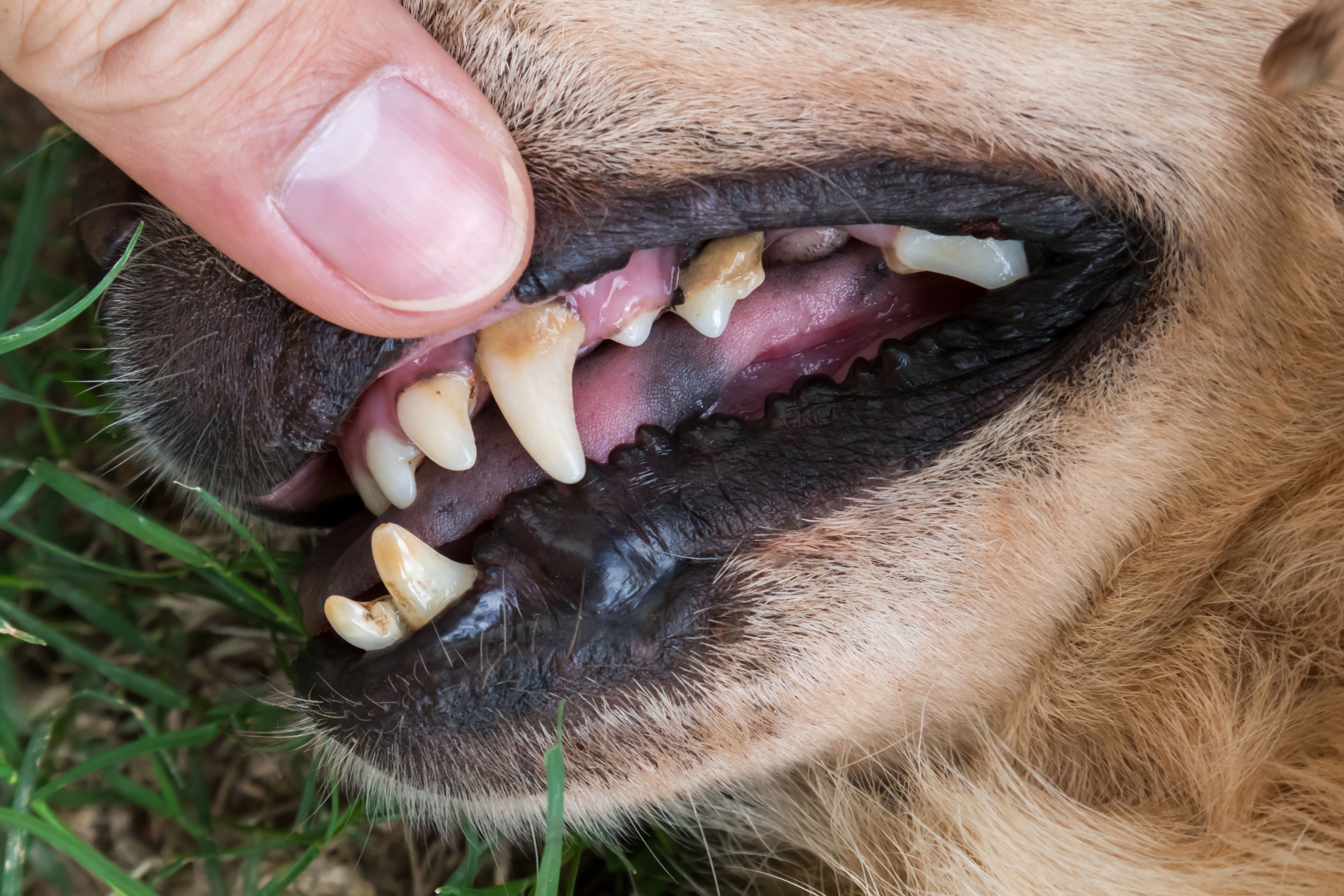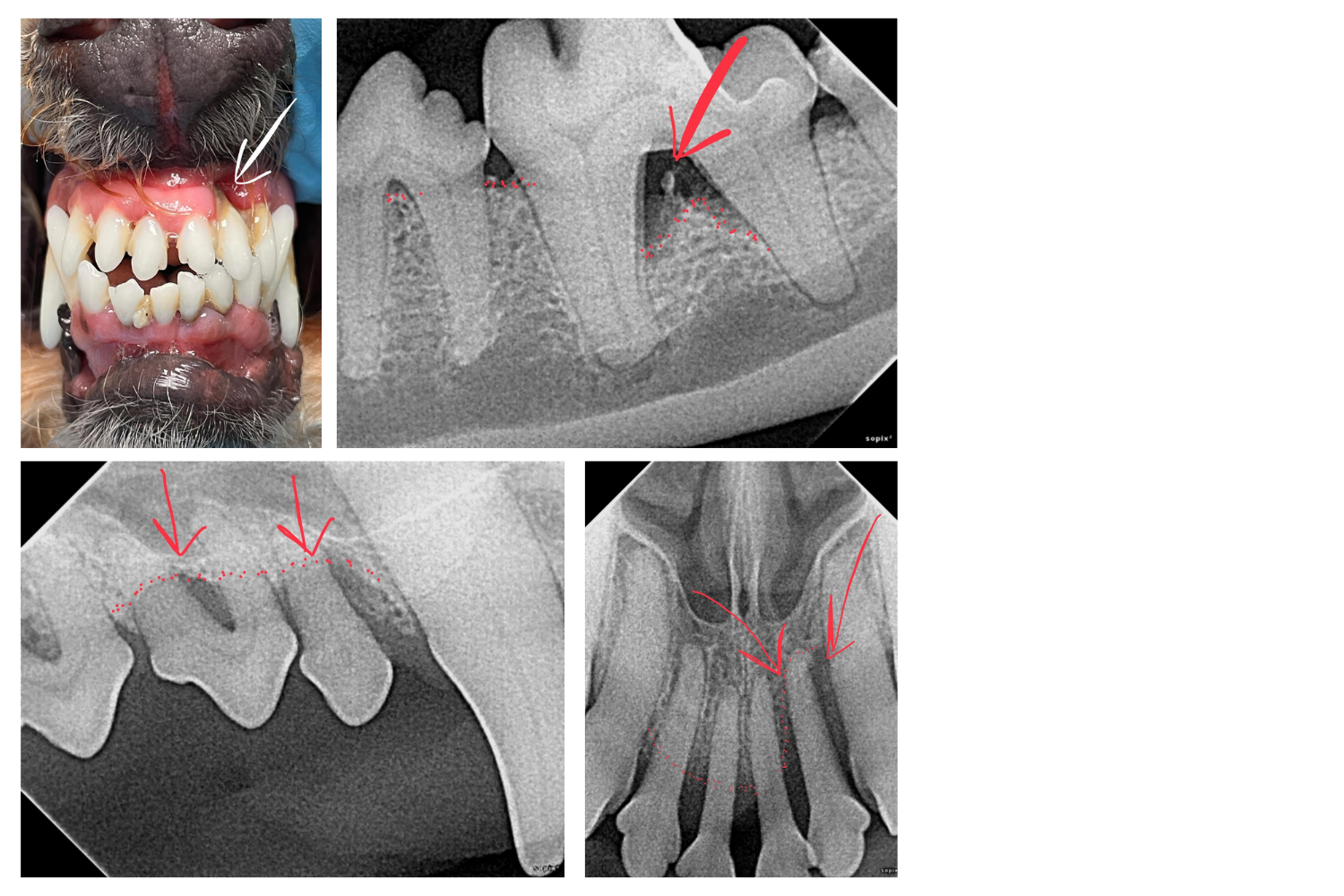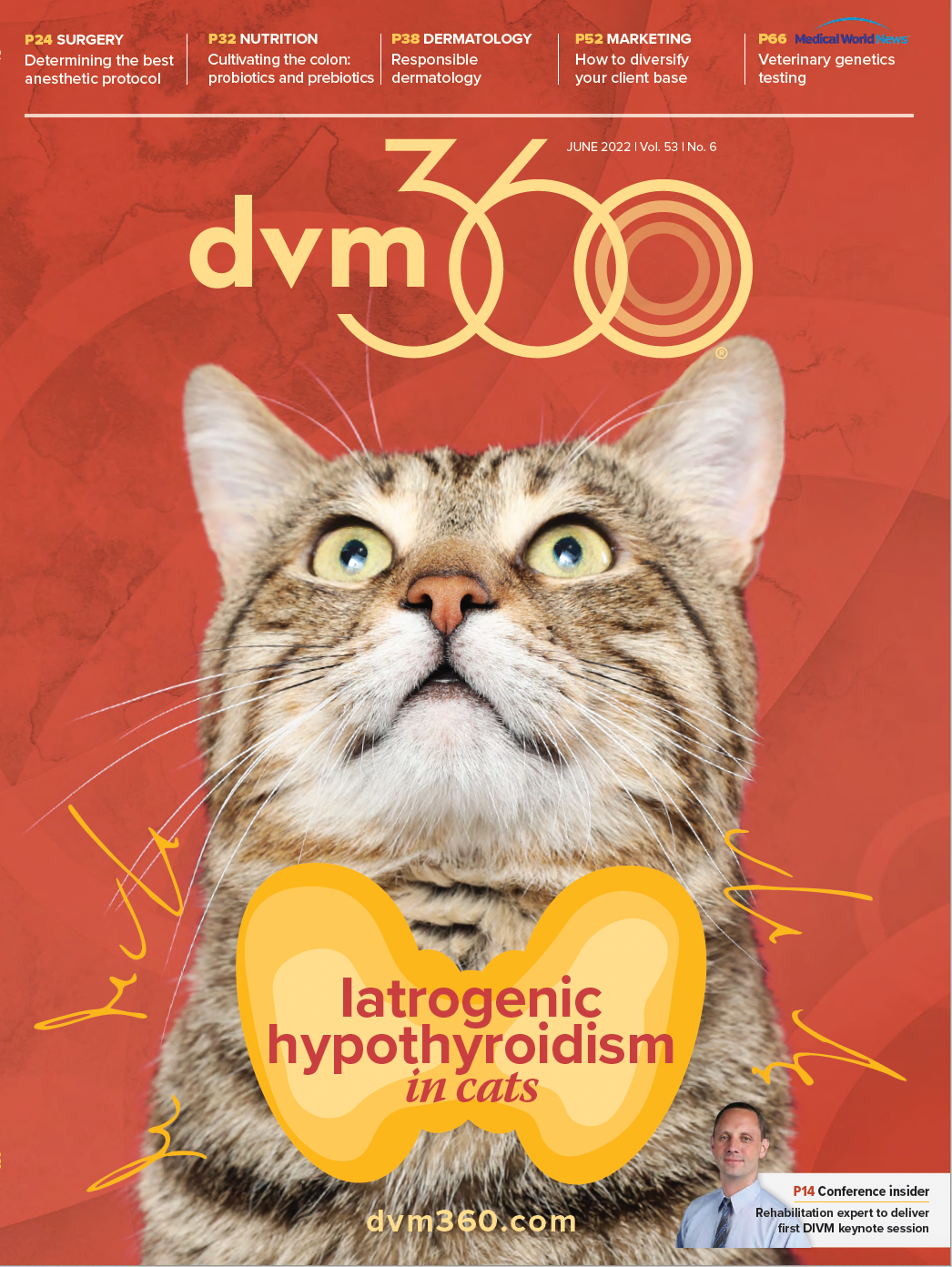The danger of nonanesthetic dentals
A veterinarian explains why nonanesthetic dentals are dangerous for pets and harm our profession
mraoraor / stock.adobe.com

Murphy is a beautiful 8-year-old goldendoodle whose mom came to us for a second opinion on his mouth. It was obvious from the moment we met Murphy’s parents that he was an important part of the family and very well cared for. Unfortunately, Murphy’s mouth was full of signs of advanced and painful periodontal disease. Murphy, like a majority of pets, had suffered in silence for years due to the inappropriate care provided by “nonanesthetic dentals.” Murphy had gingival recession, swollen and red gums, halitosis, mobile teeth, pockets greater than 3 mm, and exposed tooth roots (see Figure 1). These alarming findings of advanced and painful dental disease were documented on a recent nonanesthetic dental and discharge report instructions included to “consider scheduling an anesthetic dental in 6 months.”
Murphy’s mom realized that something just didn’t seem right and was not interested in delaying further appropriate care for her beloved best friend. Without hesitation she scheduled a professional anesthetic dental (dental prophylaxis and dental x-rays) with our team, which allowed Murphy's advanced disease advanced disease to be appropriately assessed and treated. Murphy’s mom, like many other pet parents, was not previously educated on the importance of routine professional dental care and dental homecare. Murphy required extensive oral surgery and surgical extraction of 16 teeth that could have been prevented if the client was properly educated and had care been provided before allowing the disease to progress.
As veterinarians we hold the very important responsibility to make sure that pets do not suffer. AAHA does not certify practices who offer nonanesthetic dentals for good reason, as they are harmful to pets and do not meet the standards of care. Before becoming the medical director of our AAHA-accredited facility, I was an associate veterinarian for many years. I admit that in the past I was also led to believe that scheduling and recommending these nonanesthetic dentals was a benefit to the pets that we took an oath to serve. I now realize that I, like many other veterinarians in general practice, used to be part of a problem that continues to plague pets throughout our country.
Nonanesthetic dentals are advertisements for pet parents that make false promises. As we all know, periodontal disease is the most common illness that affects all our pets. These procedures lead to further and unnecessary deterioration of the health of our pets. As veterinarians, we must be united in our stance against nonanesthetic dentals as we share a responsibility to provide complete care for pets that we have taken an oath to serve. By offering procedures like nonanesthetic dental at our practices, we continue to discredit our profession and provide inadequate care that puts pets in harm’s way.
We must stand together and eliminate this “service” to pets at animal hospitals across the globe. If you do not have the ability to acquire and correctly interpret dental x-rays as well as perform appropriate oral surgery, then consider attending some continuing education classes or refer these cases to a dental expert. Our common goal should be to put nonanesthetic dental businesses out of business. Unfortunately, these nonanesthetic dentals are being provided outside of animal hospitals, which is practicing veterinary medicine without a license, and should be dealt with by the appropriate authorities. The time has come for us to stand together and live up to the oath we took as veterinarians to make a difference for pets everywhere.
Figure 1. Intraoral Dental X-rays of Murphy, Showing Examples of Bone Loss, Bone Destruction, and Bone Infection
Images provided by Jon Klarsfeld, DVM, practice limited to veterinary dentistry.

